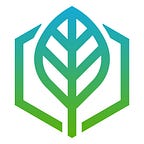When Traditional Finance Meets Digital Assets
One noteworthy development in the cryptocurrency world is the convergence of traditional finance (TradFi) and digital assets, catalysed by the entry of major institutional players into the arena. An integral aspect of this consolidation, which is continually gaining momentum, is the tokenization of real-world assets (RWAs), which reformats off-chain financial assets into tokens.
Currently, the tokenization of RWAs is a flourishing area teeming with considerable promise. This article delves into the present condition of tokenized RWAs to uncover their beginnings, future possibilities, and growth paths.
What on earth are these so-called “Real-World Assets”?
Are they the secret stash of treasure maps, hidden pirate chests, or perhaps the fabled fountain of everlasting coffee? Well, not quite.
Real-world assets (RWAs) refer to the process of issuing a tokenized representation of tangible and intangible assets such as real estate, bonds, commodities, financial assets, intellectual property, data, personal identity, and more. Tokenizing RWAs involves transferring these off-chain assets onto a blockchain (on-chain) to unlock fresh opportunities and cutting-edge applications. By tokenizing RWAs, assets can be securely stored and traced on a blockchain, bringing enhanced operational efficiency and transparency, diminished human errors, verifiable proof of ethical corporate practices, and more.
The tokenization process
To bring RWAs on-chain, their ownership and parameters must be properly documented within a blockchain’s ledger. While the specific procedures may differ across assets, the overarching process typically entails setting standard parameters before creating tokenized versions of the asset on-chain. The tokenization process is illustrated in the figure below:
Perspective and Evolution of RWA
Tokenizing illiquid assets represents a burgeoning market brimming with remarkable potential, with numerous credible sources anticipating a substantial expansion in tokenized RWAs. For instance, the Boston Consulting Group has projected that global illiquid asset tokenization could translate into a $16 trillion business opportunity by 2030. Likewise, according to a report from digital asset management firm 21.co., the tokenized asset market could reach $10 trillion this decade, driven by an increase in blockchain adoption among traditional financial institutions.
Even securing a modest market share could prove advantageous for the blockchain industry. In the context of the estimated $900 trillion total value of global assets, tokenized assets constitute a relatively modest portion. With this perspective, it could be argued that there remains plentiful room for further growth.
Significant Progress
In addition to DeFi protocols, traditional financial institutions (TradFi) have shown rising interest in tokenized RWAs. Some have even created their own private blockchains to explore asset tokenization. As adoption continues to rise, there is potential for conventional exchanges to engage in the secondary trading of RWAs. As the sector ripens, it is the monitoring advancements that will steer RWAs towards comprehensive adoption. Among others, traditional companies such as Goldman Sachs, Deutsche Bank, Siemens, and Mastercard are already touching upon RWA as a core primitive for asset management. Additionally, 97% of institutional investors believe that “tokenization will revolutionize asset management.”
RWA Data and Reliability
Chainlink technology plays a pivotal role in RWA tokenization by providing the trust and security required to create a reliable and efficient solution. Specifically, Chainlink decentralized oracle networks (DONs) provide a full suite of decentralized services that support the end-to-end tokenization of RWAs, including proof of reserves, cross-chain interoperability, and secure data delivery. One of the most significant advantages of using Chainlink technology for RWA tokenization is the unmatched security and reliability it offers. Each industry-standard Chainlink service is built with a decentralized, defence-in-depth approach that provides enterprise-grade security and reliability at every turn. Additionally, Chainlink DONs are made up of independent and high-quality node operators with experienced DevOps backgrounds, including Vodafone, Deutsche Telekom, and other leading telecom companies, as well as proven blockchain node operators in the Web3 industry.
RWAs can be split into two categories: digital and physical. A treasury bill is called a RWA but in reality, only exists in the digital space and has intangible attributes like yield rate and maturity duration. In contrast, a gold bar is physical, with physical attributes like weight and purity. Depending on the type of RWA, a data source needs to be selected to reliably track and trace the RWA, starting with its collateralization (reserves). For example, tokenized gold requires data on how much gold is stored in a vault, and the quality of the data source determines the reliability and trust in the backing of the token. Garbage in, garbage out. This is one of the important roles that Chainlink plays in RWA tokenization with its Proof of Reserve service.
Tokenized RWAs also require counterparties, which may exist on a blockchain different from the one an asset has initially been tokenized on. Chainlink’s Cross-Chain Interoperability Protocol (CCIP) unlocks secure cross-chain movement for tokenized RWAs, unlocking liquidity by enabling access to and from any blockchain.
In short, as RWA tokenization continues to gain steam, the industry-leading Chainlink decentralized computing platform provides all the services financial institutions need to quickly realize the opportunities unlocked by tokenized assets.
Final observations
The tokenization of real-world assets demonstrates a compelling use case for blockchain technology, underscored by its considerable potential. With its superior transparency and efficacy, tokenization serves as a promising upgrade to the current financial system. We have observed initial indications of institutional interest as traditional companies explore and adopt blockchain technology solutions to enhance existing inefficiencies.
This rise in tokenised RWAs also implies a growth in the Web3 economy. For example, the inclusion of RWAs has introduced more stable assets into the DeFi landscape, diversifying collateral options. The continued development and innovation in the RWA vertical holds our attention with eagerness.
